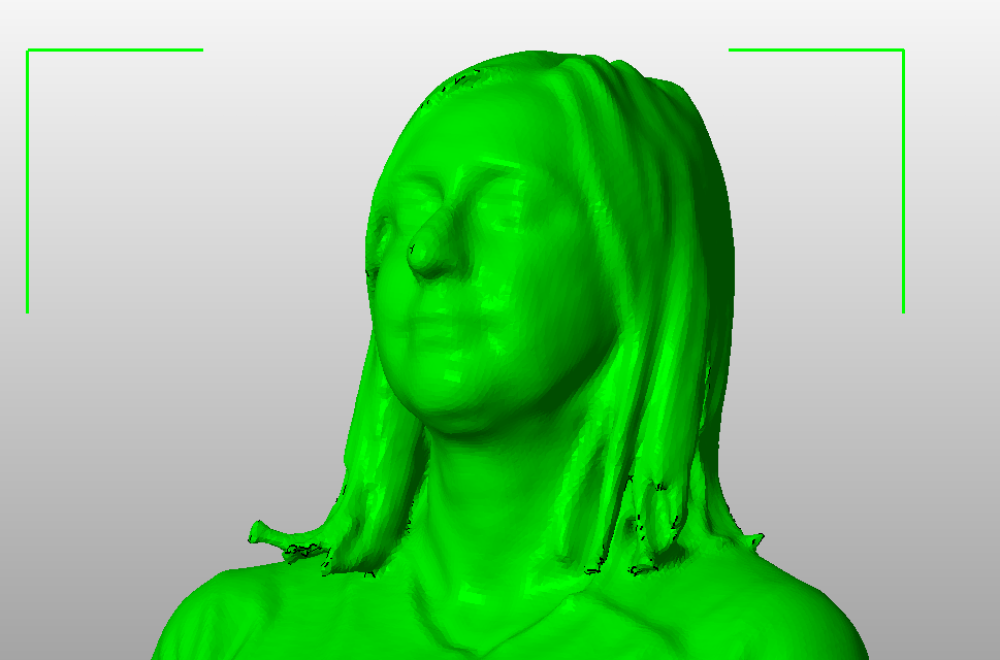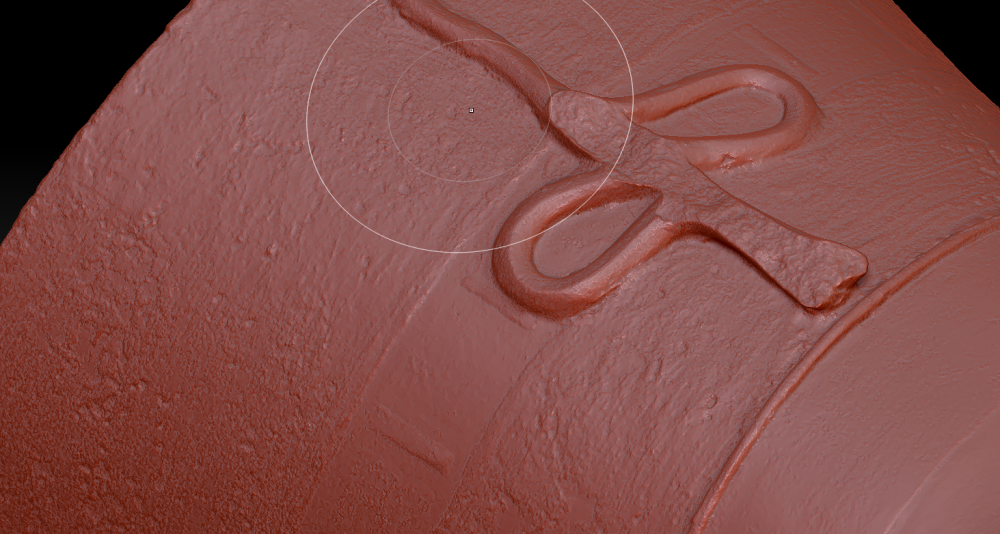 The New York Times and countless other news outlets picked up on a story that’s been making the rounds of the 3D printing community the last few weeks; Swiping a Priceless Antiquity … With a Scanner and a 3-D Printer tells the story of two artists; Nora Al-Badri and Jan Nikolai Nelles, who apparently succeeded in making a massive digital art heist when they surreptitiously scanned Nefertiti’s bust in Berlin’s Neues Museum. It’s great art commentary with many levels; It talks to issues around digital copy vs. originals, who is allowed to own these copies, and going deeper, questions the museum’s right to own the statue which rightfully should belong to Egypt. By releasing the files for The Other Nefertiti free online as a torrent, the artists have initiated a huge debate with many layers. The 3D Printing community is not without its debate about this work either. The video the artists share that shows them sneaking a kinect scan from beneath Ms. Badri’s scarf raises a lot of questions as to whether the artists even scanned the artifact as they claim.
The New York Times and countless other news outlets picked up on a story that’s been making the rounds of the 3D printing community the last few weeks; Swiping a Priceless Antiquity … With a Scanner and a 3-D Printer tells the story of two artists; Nora Al-Badri and Jan Nikolai Nelles, who apparently succeeded in making a massive digital art heist when they surreptitiously scanned Nefertiti’s bust in Berlin’s Neues Museum. It’s great art commentary with many levels; It talks to issues around digital copy vs. originals, who is allowed to own these copies, and going deeper, questions the museum’s right to own the statue which rightfully should belong to Egypt. By releasing the files for The Other Nefertiti free online as a torrent, the artists have initiated a huge debate with many layers. The 3D Printing community is not without its debate about this work either. The video the artists share that shows them sneaking a kinect scan from beneath Ms. Badri’s scarf raises a lot of questions as to whether the artists even scanned the artifact as they claim.
The video shows the two using a Kinect Xbox controller to capture Nefertiti, and while I have no doubt the artists may have done the Kinect stunt, there is simply no way the scan being distributed was made with a Kinect. Simply put, the scan being distributed which is made of more than 2 million triangles is far too detailed to have been made with that hardware. Even if the device was “hacked” as news reports state, this quality is not achievable with this method. Problems in the story include how the unit was powered (Kinect requires a wall outlet), but even if they carried some kind of battery, Nefertiti is under glass which also causes errors in this method of scanning. Other questions include where was the connected laptop hidden? Then, the video shows Ms. Badri repeatedly covering and recovering the Kinect as she circles Nefertiti. A normal scan would require uninterrupted line of sight of the statue as the scan is happening. In order to get coverage of the top of the headdress, the scanner would have to be held high above the statue, and not at waist level as the video indicates. Maybe multiple scans might have been made from various vantage points and meshed together later, but truthfully the scan is way too high fidelity for the way the Kinect works. The device sprays a grid of points of infrared light over the subject and each point is measured as a distance measurement while the computer software does the math to turn that into a 3D model. Its a fast way to generate a 3d model, but with accuracy that is at best only within a few millimeters.


So if it wasn’t made with a Kinect, How was this scan created, and why lie about it? When confronted about how the scan was made on the 3D in Review Podcast, Mr. Nelles is vague in his answers and claimed that he and Ms. Badri knew nothing about the device and that some hacker types had set up the hardware for them. The “hackers” then took the data and created the model for them. When asked about the hacker’s technique, Mr. Nelles stated that the hackers had left for New Zealand and were unable to be contacted.
One theory is that the scan is actually generated by Photogrammetry, a technique of capturing images of the sculpture from a variety of angles. The images are then fed into software such as Agisoft Photoscan that analyzes all the images for common points, and generates a 3D model of the subject. Paul Docherty is a researcher who has extensively used photogrammetry to reconstruct historic artifacts and sites, including a model of Nefertiti’s bust using available imagery he gathered online. He catalogued the process in his article 3D Modelling the Bust of Queen Nefertiti, and also spoke on the 3D in Review podcast about his efforts. Mr. Docherty has since gone on to question the Nefertiti Hack scan in his article Nefertiti Hack – Questions regarding the 3D scan of the bust of Nefertiti, in which he agrees that there is no way this scan was captured with a Kinect. So, its possible that the scan could have been made using a series of 45-120 high res images covertly gathered with a cellphone, but if that’s the way it was done, why show the Kinect in the video?

The last possibility and reigning theory is that Ms. Badri and Mr. Nelles elusive hacker partners are literally real hackers who stole a copy of the high resolution scan from the Museum’s servers. A high resolution scan must exist as a high res 3D printed replica is already available for sale online. Museum officials have dismissed the Other Nefertiti model as “of minor quality”, but that’s not what we are seeing in this highly detailed scan. Perhaps the file was obtained from someone involved in printing the reproduction, or it was a scan made of the reproduction? Indeed, the common belief in online 3D Printing community chatter is that the Kinect “story” is a fabrication to hide the fact that the model was actually stolen data from a commercial high quality scan. If the artists were behind a server hack, the legal ramifications for them are much more serious than scanning the object, which has few, if any legal precedents.
What do you think? Will we ever know? Nefertiti’s data liberation has certainly sparked some controversy and I look forward to seeing what the community creates from it, as well as what truths come out as the story unfolds!

More commentary here: http://3dprintingindustry.com/2016/02/26/3d-scanned-nefertiti-real-fake-or-real-fake/
Maybe they bought the high-quality model and scanned it!
Or had access to one! I agree this is a highly possible option
Wow, this is getting a ton of attention!
To summarize my current thinking, there are three options:
1) Its Photogrammetry, perhaps from a combination of gathered and stealthily taken images (but these have to be non Kinect, high res images)
2) Its a scan of a replica, which opens all sorts of conversations about originality, ownership, etc.
3) Its stolen data remeshed to hide that its someone else’s scan. This could have been obtained from hacking museum servers, or through someone involved in 3d printing the replicas that are for sale.
If you want some tech facts and an in-depth analysis that does more than just comparing images, take a look here: https://www.db4cl.com/3d-scanner/technical-analysis-3d-scanned-nefertiti/
It’s written as a tech-addition to most articles like yours. Since i missed some hard tech facts i took some time, performed tests and wrote everything down.
2 things;
Infrared is blocked by glass. There is no way a scanner that uses IR could make a scan through a glass case. Google search “Does infrared radiation pass through glass”. Near IR is a exception but a limited one.
Refractive index of glass, a cube with any object inside it where a camera does an orbit will create a distorted image because the apparent position of the object inside the case will move. The middle of the surface is 90 degree incident, the edge is 45degree incident, these will have different refractive positional changes to the apparent location of the subject.
I totally disagree. Take a look at my in-depth technical analysis here: https://www.db4cl.com/3d-scanner/technical-analysis-3d-scanned-nefertiti/
The glas reduced the maximal scanning distance but it was still high enough to perform the scan through the glas protection as shown in my article.
I totally disagree. I’ve tested it and can prove you wrong. Take a look at my in-depth tech analysis here: https://www.db4cl.com/3d-scanner/technical-analysis-3d-scanned-nefertiti/
I’ve scanned a 1:1 replica with a Kinect scanner through a museum glas protection without any hassle.
Actually this is not true. I have a number of scans I have done through glass, but the second paragraph is spot-on. Yes the refractive and reflective properties of glass can create distortions, but ironically due to the way that the PrimeSense technology works, as well as the way we take this into account in our software, makes the less of an issue. Plus the lenses on the camera as well protective shield on the Structure sensor are glass.
But I do agree that this, plus many other things in the process they alleged to use in scanning the Nefertiti scan, politely saying is very misleading and they are now saying their Kinect was modified. Something that was not mentioned in my interview with Nikolai.
As i tested i yesterday once again, it seems the maximum depth is reduce by thick glass / acrylic glass but not enough to prevent such a scan.
BTW Sorry for the double post, you can delete one.
I’m not sure what the legal ramifications would be for releasing a scan of a work that has been in the public domain for thousands of years. In Corel vs. Bridgeman (1999) the New York District Court ruled that exact photographic replicas of public domain works could not be copyrighted … from an ethical standpoint, the Nerfititi bust is a cultural artefact that is in the public domain and therefore its intellectual property belongs to everyone. A high-resolution 3D scan is ultimately just a copy — surely that is the intent after all — so I don’t think it could be argued that releasing the scan was unethical. How they came about the scan, though, is a different matter …
I did not realized you wrote this Fred. I guess my question to you Thursday 2/25 left you intrigued. Also, it looks like you had an opportunity to talk to Claire too. It would have been great to have you on “3D in Review” when Paul came on. If you are still interested, I would love to have you on this Friday if you have time. Maybe I can get Paul, and Cosmo Wenman on as well. I think we as whole could deconstruct this pretty thoroughly. Also, I have written the museum to obtain a segment of their scan for comparison so it will be very interesting to compare this a vertex level.